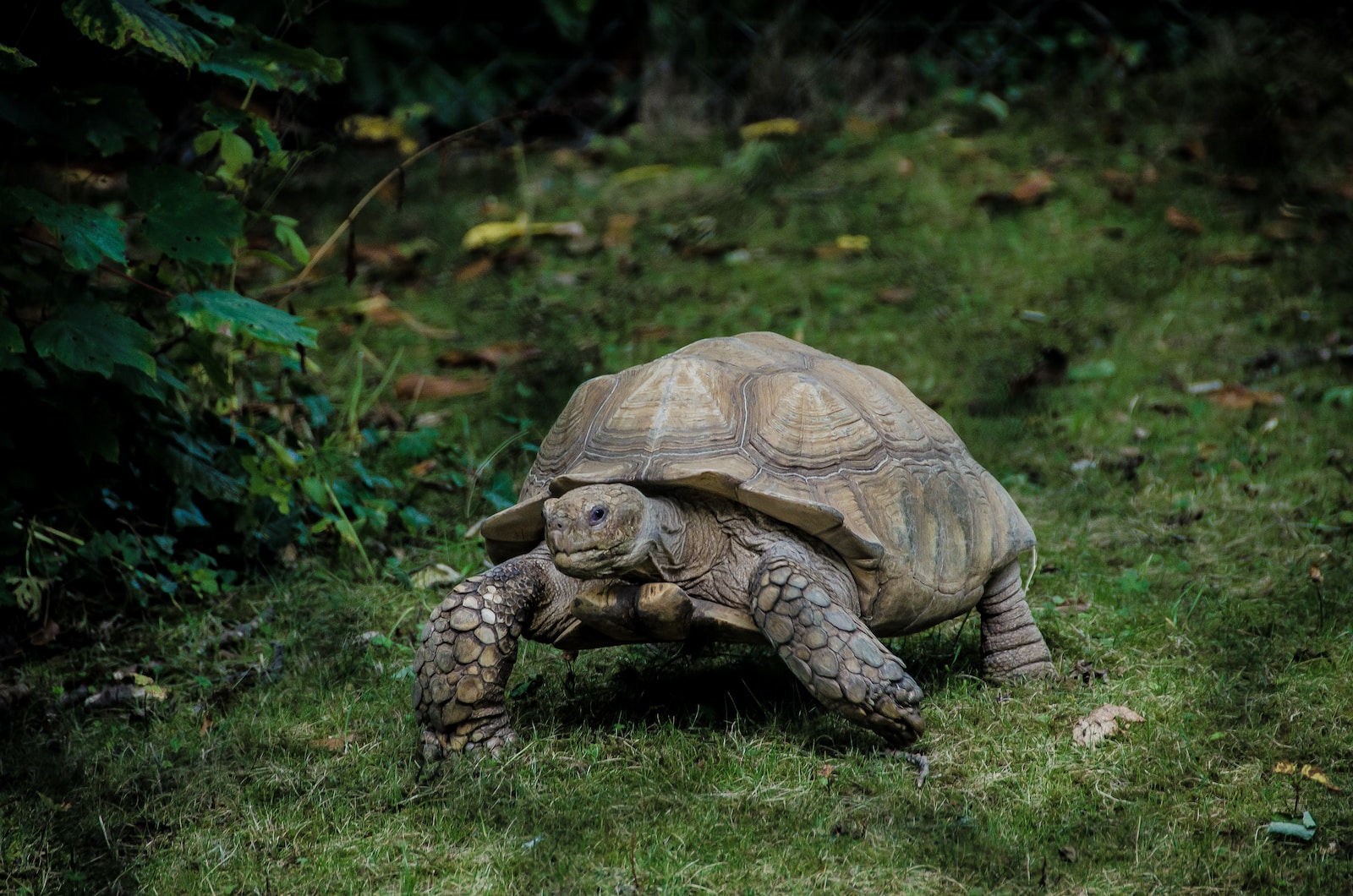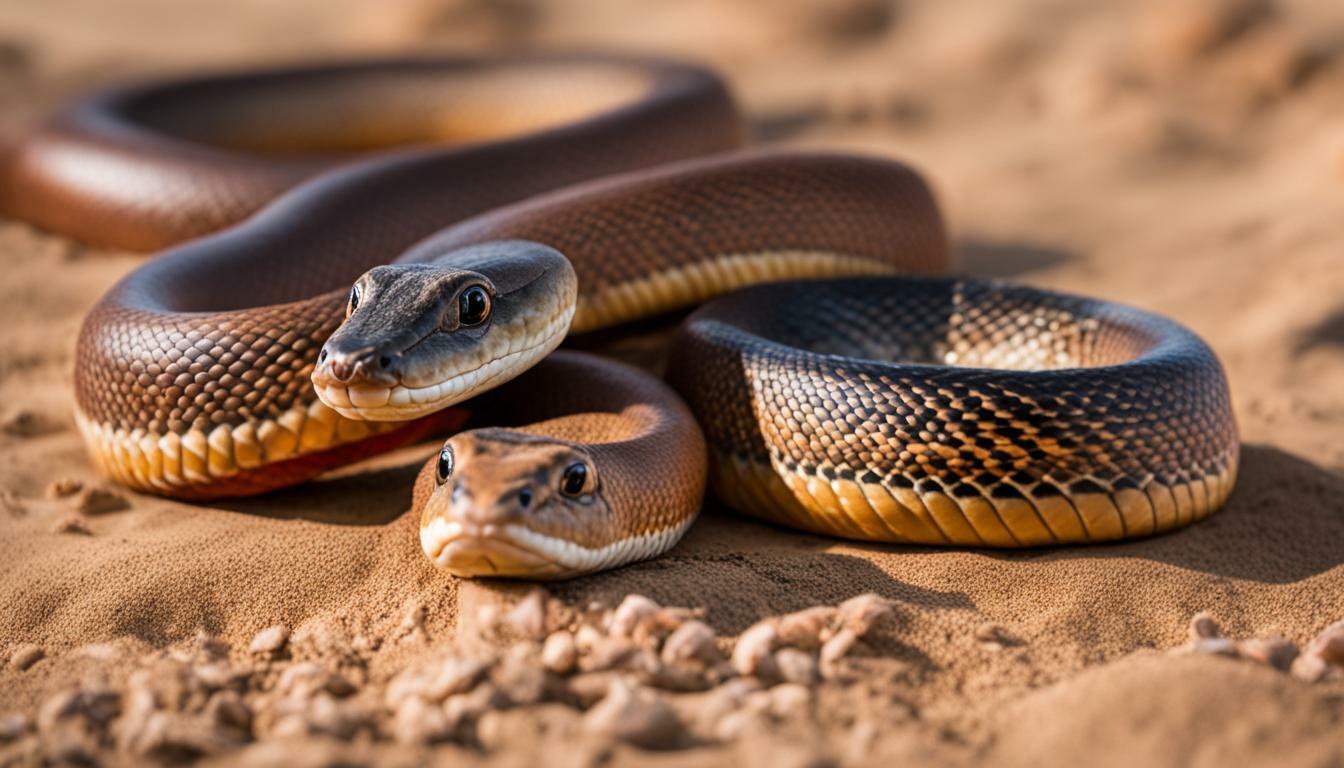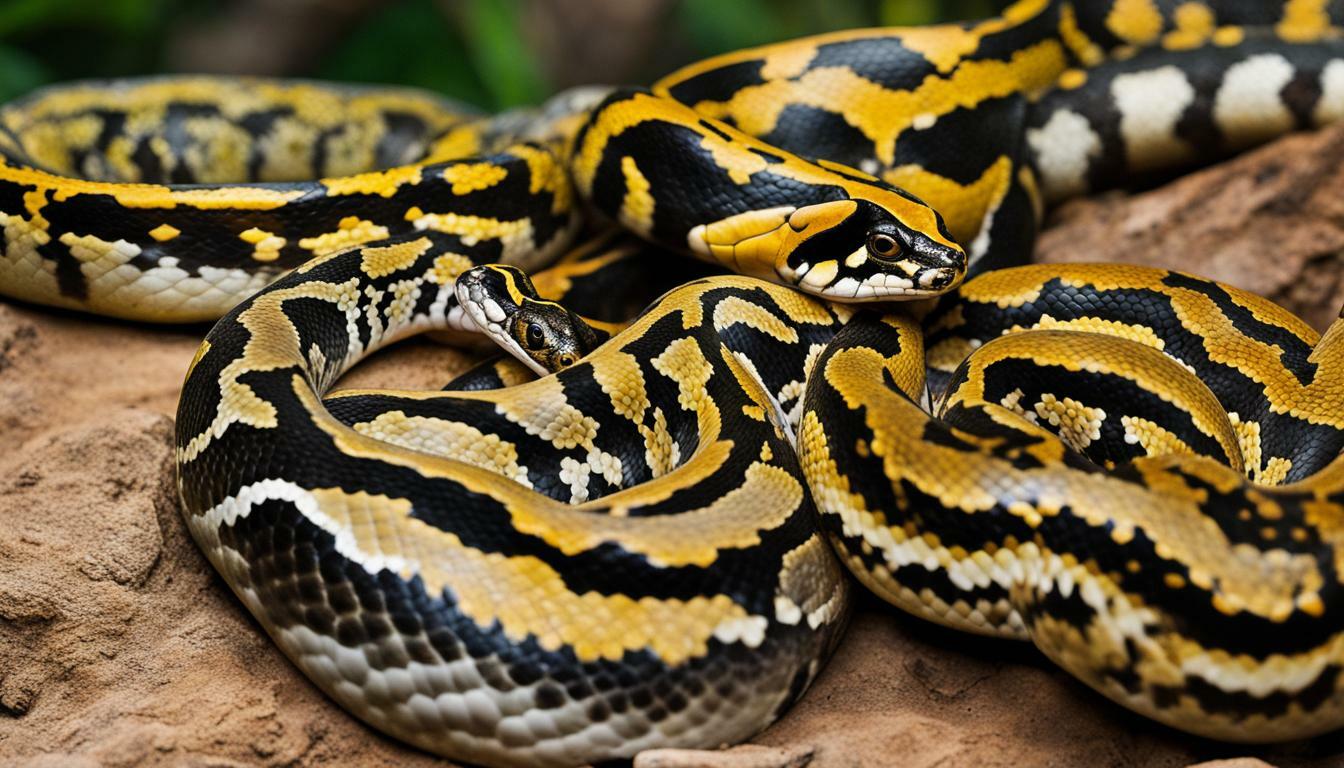Shelled Spectacles of the Reptilian Realm
As we delve into the kaleidoscopic world of reptiles, it becomes increasingly evident that their diverse spectrum extends far beyond what meets the cursory glance. These ectothermic creatures, often mistakenly assumed to be a homogenous group, in fact, encompass a vast array of species varying in size, habitat preference, and lifestyle.
A particularly intriguing conundrum arises when observing tortoises and turtles – two commonly confused members of the reptilian family. From the sinuous swivel of a snake to the tactical tread of a tortoise, each reptile contributes its own unique rhythm to this biological ballet.
Among them all though, tortoises and turtles have long been in an intricate dance of mistaken identities. Their strikingly similar appearances often lead us into believing they are interchangeable creatures when in actuality their differences are nuanced but notable.
Busting Shell-ter Skelter Myths
It is rather remarkable how widely used yet inaccurately understood the terms ‘tortoise’ and ‘turtle’ are. Despite their common usage as synonyms in colloquial dialects worldwide, these words actually denote two distinct types of creatures with varying physical characteristics and living environments.
The first misconception revolves around habitat; while both species belong to the larger Testudines order known for its hard shell-carrying members including terrapins in addition to tortoises and turtles – they habituate remarkably different environments. A simple trick often recited is ‘all tortoises are turtles but not all turtles are tortoises’ – an ode to how ‘turtles’ is an umbrella term sometimes erroneously applied broadly.
Another prevalent myth concerns their mobility; both have shells but whereas one can glide gracefully through waters (and occasionally enjoy basking in the sun on dry land), the other is strictly terrestrial. The distinctions go deeper and are intriguingly insightful – a testament to the marvels of Mother Nature.
Meet the Shell-dwellers
A Tale of Two Shells: More Than Just a Mobile Home
Our journey into the lives of these marvelous reptiles begins with their most distinctive feature – their shells. The shell of a tortoise or turtle is not just an accessory, but a fundamental part of their anatomy, housing vital organs beneath its protective embrace. Comprised primarily of hardened layers of keratin and bone, the shell is divided into two main sections – the carapace (upper dome) and the plastron (lower flat surface).
Tortoises, known for their domed and humped carapace, carry an armor that’s more suitable for life on rugged terrestrial terrain. Their plastron is similarly robust, protecting them from threats below.
On the flip side, turtles possess a relatively flattened carapace designed to streamline swimming and diving in aquatic environments. A turtle’s plastron may also be slightly reduced or have strategic openings to allow for increased mobility.
Fleet-footed vs Flippers: The Walk-Swim Dichotomy
Just as bespoke as their shells are their limbs – perfect examples of nature’s exquisite design in response to environmental demands. Tortoises, predominantly land dwellers sport sturdy elephantine legs that are ideal for traversing rough terrain whilst bearing substantial weight. These stout appendages have sharp claws which aide in digging burrows or finding food.
In stark contrast are our shelled swimmers – Turtles. Turtles come equipped with webbed feet or elegant flippers depending on if they’re freshwater or marine species respectively.
For example, marine turtles like the Leatherback boast powerful paddle-like flippers enabling them to cover enormous distances in open ocean with effortless grace; while freshwater turtles like Painteds or Red-eared Sliders sport webbed digits adept at both swimming and navigating muddy benthos. This remarkable anatomical variation perfectly emphasizes the divergent evolutionary paths these two groups have taken while providing a fascinating insight into how different challenges pose unique solutions in the natural world.
Home is Where the Habitat is
Understanding Tortoise Habitats: From Desserts to Savannas
While all tortoises sport a fortress-like shell, their homes are as varied as the patterns on their protective carapaces. Most notably, tortoises have made a comfortable living in arid deserts and grassy savannas.
The desert-dwelling tortoise species exhibit an impressive adaptability that allows them to thrive in unfavorable and harsh environments. In conditions where other animals fear to tread, they are the undisputed champions of survival.
Their unique physiology facilitates water conservation while their burrowing behavior enables them to escape extreme temperatures during summer and winter months. Among these sand-dwellers, the Gopher Tortoise stands out for its impressive tunneling skills that also provide refuge for hundreds of other species, earning it the title ‘keystone species’.
Grassland Grazers: The Savanna Sojourners
In stark contrast to their desert cousins, some tortoises have found serenity among vast expanses of grasslands or savannas. These roaming vegetarians relish in the abundance of fresh foliage in these verdant habitats. The African spurred tortoise is one such grazer, often sighted luxuriating amidst tufts of savanna grass.
The shell patterns camouflaging these turtles provide protection from predators while keeping body temperature stable under scorching sunlight or cold nights. These tortoises exhibit social tendencies by dwelling together at favorite feeding zones demonstrating a remarkable adaptation that ensures survival amidst predation threats and food scarcity.
Diving into Turtle Habitats: A Voyage through Freshwater and Marine Biomes
Moving from land dwellers to water navigators, turtles showcase a similar adaptability concerning their habitats. Turtles are predominantly aquatic creatures, proficient swimmers that have mastered life in a variety of water bodies – from serene freshwater lakes to tumultuous oceanic currents.
Freshwater turtles, like the Red-Eared Slider and the Painted Turtle, are usually found in placid ponds, slow-moving rivers and serene lakes. These water-loving reptiles revel in waters rich with aquatic vegetation and sun-basking spots.
Notably, they display a penchant for basking on emergent rocks or logs, soaking up the sun while remaining close to the safety of water. An intricate balance of swimming and sunbathing illustrates their remarkable life cycle tied to both aquatic and terrestrial realms.
Sea Surfers: The Oceanic Odyssey
Then there are sea turtles – the majestic mariners of turtle kind. Their lives are an endless odyssey across vast oceanic expanses as they surf through marine currents in search of food or nesting grounds.
The leatherback turtle is one such sea surfer known for its incredible transoceanic migrations from tropical breeding regions to chilly feeding areas teeming with jellyfish. Equipped with hydrodynamic body shapes and powerful flippers, these turtles traverse thousands of miles enduring variations in temperature and salinity showcasing one of nature’s most fascinating spectacles—truly a testimony to their resilience as species that have danced with dinosaurs yet continue to grace our contemporary marine landscapes.
What’s on the Menu?
Greens Galore: A Tortoise’s Veggie Fest
Tortoises, as we know, are die-hard devotees of vegetarianism. The majority of their diets consist of leafy greens, from lettuce to spinach to cabbages.
They also supplement these with other vegetables like carrots and bell peppers and a variety of fruits. Just imagine a buffet table laden with nature’s finest produce… that essentially sums up a tortoise’s daily meals!
However, it’s important to note that while they may enjoy fruit as a delicious treat, too much can be unhealthy due to its high sugar content. The tortoise’s herbivorous diet plays an instrumental role in determining its overall lifespan and health.
An enriched and balanced diet results in healthy shell growth, optimal internal organ function, and contributes significantly towards their impressively long life spans – some species have been known to live for over a hundred years! Therefore, providing them with the right proportion of calcium, fiber and minimal animal protein is vital for their long-term health.
Omnivorous Options: The Turtle’s Culinary Adventure
When it comes to dietary preferences, turtles are vastly different from their land-dwelling cousins. They swing both ways – they are omnivores – which means when they’re not munching on water plants or algae; they’re devouring insects or even small fish! Some turtles even fancy jellyfish or sea sponges if available.
Their broad palette makes them quite the culinary adventurers! The role of such dietary diversity can’t be overstated when it comes to growth, development and longevity among turtles.
A protein-rich diet helps in building strength during their growing years while plants provide necessary nutrients required for energy and overall health in later stages of life. Just as in tortoises, the nutritional balance is key; too much of one thing can lead to health issues.
For instance, too much protein can cause deformities in shell growth or kidney problems. So when it comes to turtles, it’s all about a balanced mix of surf and turf!
Chapter 4: Longevity Legends or Short-lived Shelled Creatures?
The Tortoise – Centenarians of the Animal Kingdom
When it comes to longevity, tortoises are quite literally the old-timers of the animal kingdom. With lifespans frequently surpassing a hundred years and occasionally reaching into the bicentenary realm, they put most other creatures—humans included—to shame. The venerable Aldabra giant tortoise, for instance, has been known to live well past the two-century mark, while the Mediterranean spur-thighed tortoise typically chalks up between 100 to 200 sun circuits.
Such extraordinary longevity is in part due to their slow metabolic rate, which allows them to conserve energy and prolong their life cycles. Their plant-based diet also plays a significant role in their impressive lifespan.
These vegetal victuals provide them with essential nutrients and fewer calories, reducing wear and tear on their bodies over time. They truly embody Aesop’s age-old tale about slow and steady winning the race—in terms of life itself.
Aquatic Adventurers: The Lifespan of Turtles
Turtles, though not quite matching their tortoise cousins in terms of lifespan longevity, still display an impressive ability to outlive many species. Sea turtles are known for their extraordinary voyages across oceans but equally remarkable is how long they can live — around half a century or more is common for these aquatic adventurers. Freshwater turtles aren’t far behind with many types living between 30-40 years while some species can live up to 70 years.
This commendable lifespan is facilitated by their adaptable omnivorous diet along with an aquatic lifestyle that protects them from numerous terrestrial threats. That being said, survival rates for young turtles remain low due to predation and other natural threats.
However, those that make it to adulthood can look forward to many decades of underwater exploration. From the shimmering shallows of tropical beaches to the depths of the vast oceans, these hard-shelled explorers are in for a long-lasting adventure.
The Dance of Shelled Love: Tortoise Breeding Rituals
The courtship and mating rituals of tortoises are a fascinating spectacle, an intricately choreographed dance that speaks of the primal rhythm of life. Most species commence their courtship with the male tortoise following the female, making a series of head movements that appear almost ritualistic.
The male may engage in some nipping and shell-bumping to get her attention, reminiscent of knights jousting for a fair maiden’s hand. In some species like the Giant Galapagos Tortoises, males emit deep-throated bellows which serve dual purposes – attracting potential mates and warning off rival males.
Once the female accepts his advances, mating occurs, often multiple times to ensure successful fertilization. Interestingly enough, in many species it is observed that females have an uncanny ability to store sperm for several years, laying eggs only when conditions are optimal.
End Scene: A Vanishing Shell Game?
As we conclude this exploration into the captivating world of tortoises and turtles, there emerges an undeniable appreciation for these magnificent creatures – their anatomical marvels, survival adaptations and intricate breeding rituals. Awe-inspiring as they are beings that beat incredible odds to carry on their lineage in environments as contrasting as arid deserts and vast oceans.
But these living testaments to nature’s ingenuity face challenges too many posed by humanity’s encroachment on their habitats and climate change altering ecosystems they have spent eons adapting to. Yet there is hope- conservation efforts are intensifying worldwide; every rescued sea turtle or protected tortoise nest is a small victory in preserving these amazing creatures.
Take this newfound knowledge as an invitation to observe them more closely should you ever encounter one in your wanderings or even act upon it by joining or supporting wildlife conservation initiatives. For in understanding them better perhaps we can be better stewards of their and our shared home – this astonishing planet we call Earth.
 Skip to main content
Skip to main content


